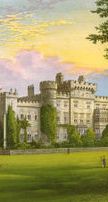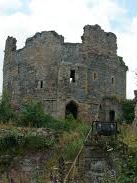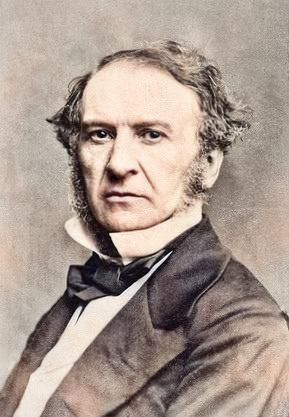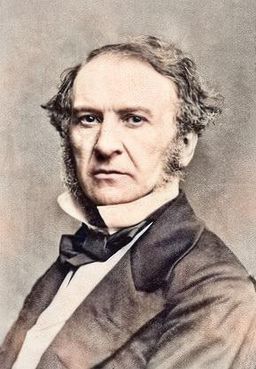

Hawarden Castle & Estate
Following the civil war, Hawarden Castle was sold in 1651, along with the Lordship, to John Glynne. He was a member of the Long Parliament but did not reside at the site. In the eighteenth century a mansion house was built and became the Glynne's main residence. In 1809 Sir Stephen Richard Glynne (Gladstone's brother-in-law) owned the castle and estate. He had modifications made to the house and it was renamed Hawarden Castle - the ruined medieval structure became known as the "old" castle at this time.
As a young man Gladstone had treated his father's estate, Fasque, in Forfarshire, southwest of Aberdeen, as home, but as a younger son he would not inherit it.
Instead, from the time of his marriage, he lived at his wife's family's estate at Hawarden in Flintshire, Wales. During the late 1840s, when he was out of office, he worked extensively to turn Hawarden into a viable business He never actually owned Hawarden, which belonged first to his brother-in-law Sir Stephen Glynne, and was then inherited by Gladstone's eldest son William Henry Gladstone in 1874.
In 1896 the Archbishop of Canterbury, Edward White Benson, died at Hawarden Castle and his body was put on the train at nearby Sandycroft station to be eturned to London.
William Gladstone occupied the house until his death there in 1898. His son, William Henry Gladstone, who had been High Sheriff of Flintshire for 1888 died in 1891 and it then passed to his son William Glynne Charles Gladstone. He was later killed in the First World War. The estate was subsequently purchased by his uncle Henry Gladstone, 1st Baron Gladstone of Hawarden. The house and estate are still a private residence (although some of the grounds are open to the public) and are still owned by the Gladstone family.
This website is committed to the works and memory of William Gladstone. It is an independent project. © Copyright. All rights reserved.

